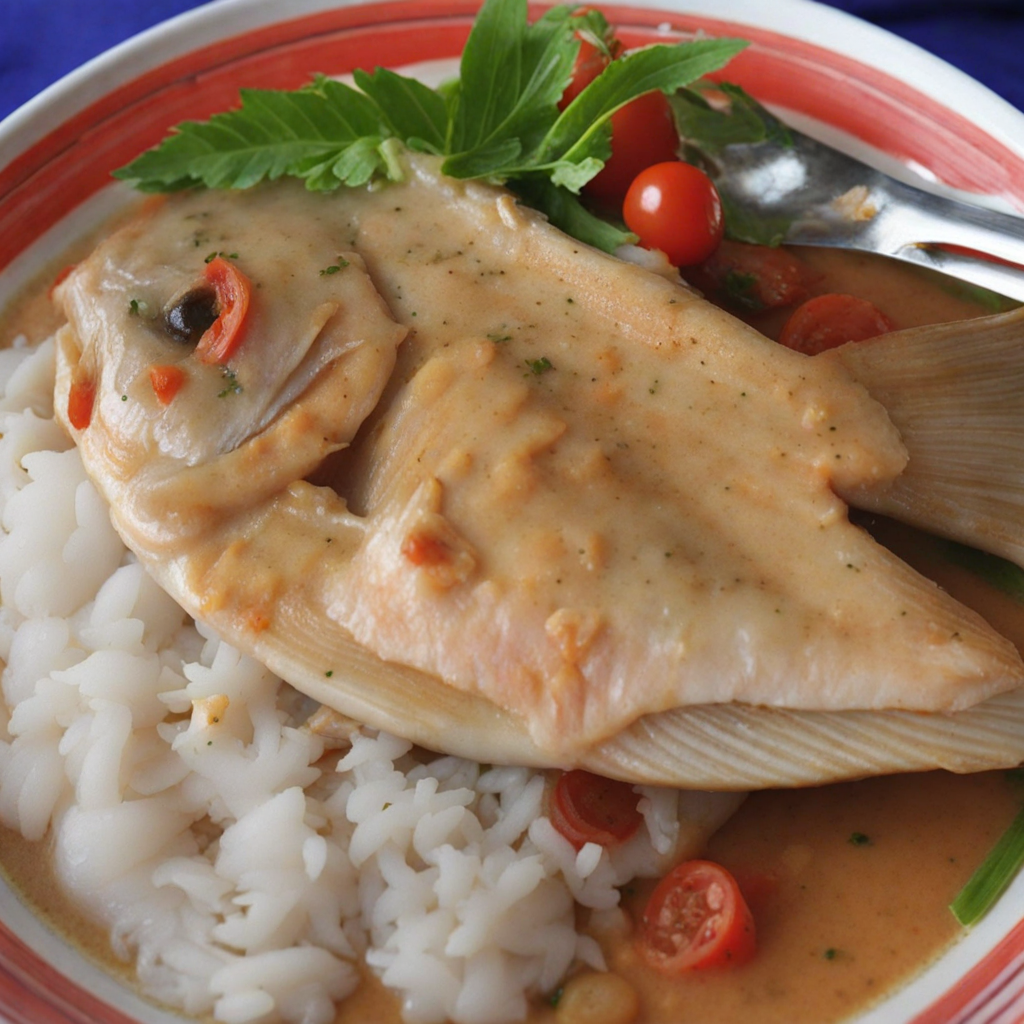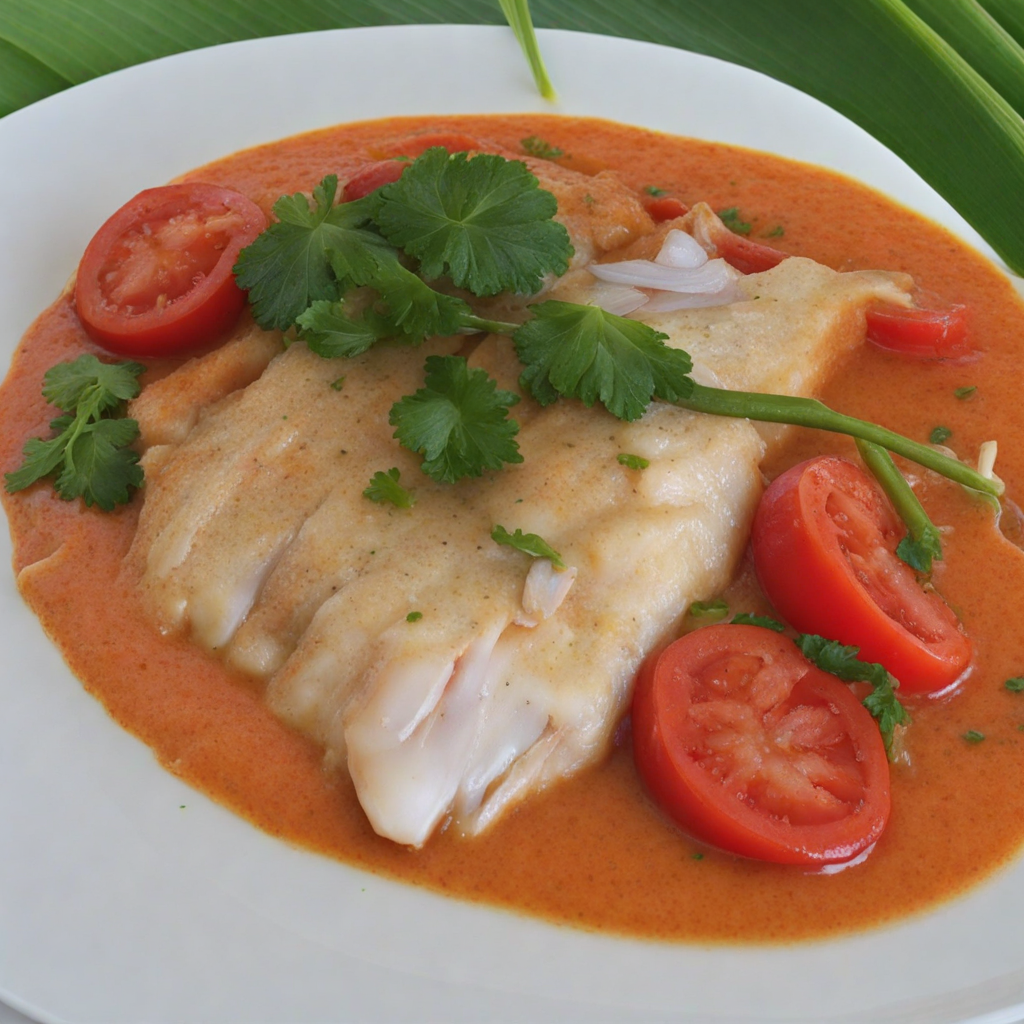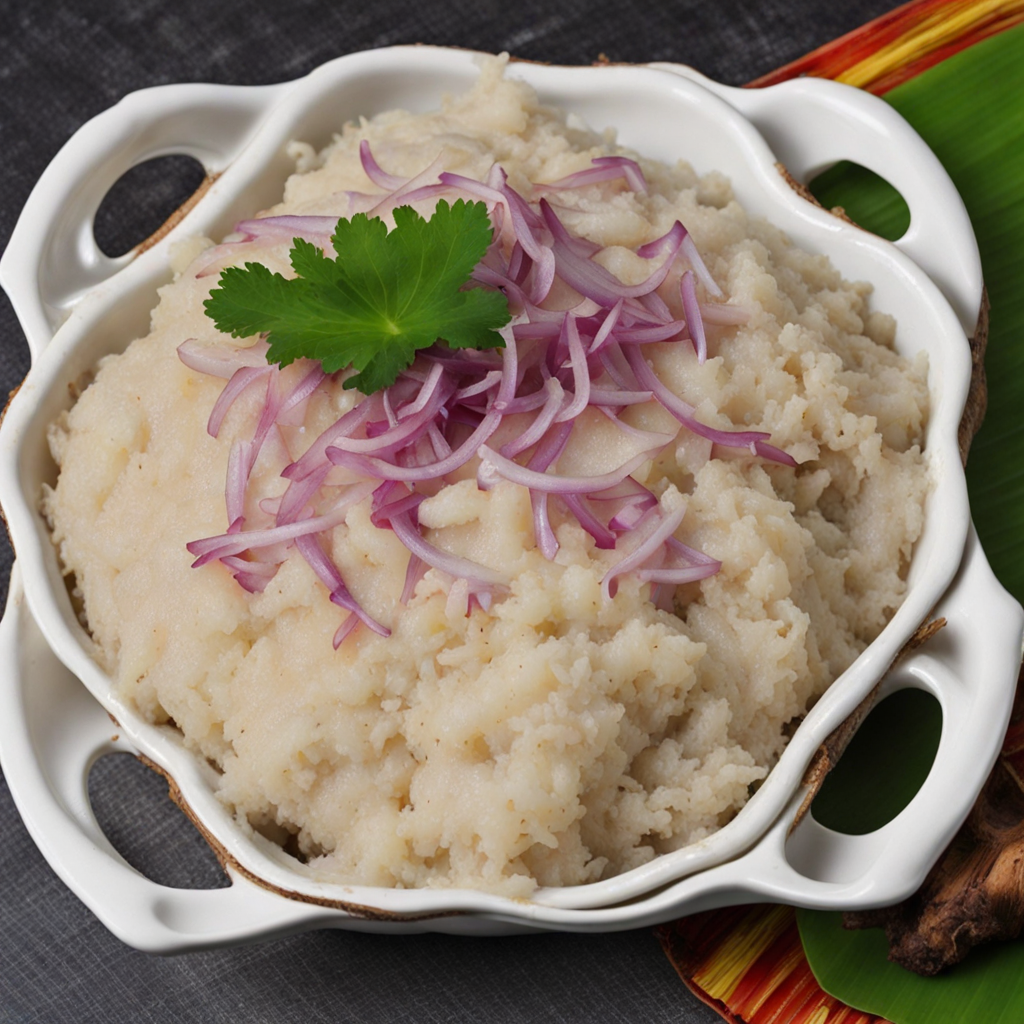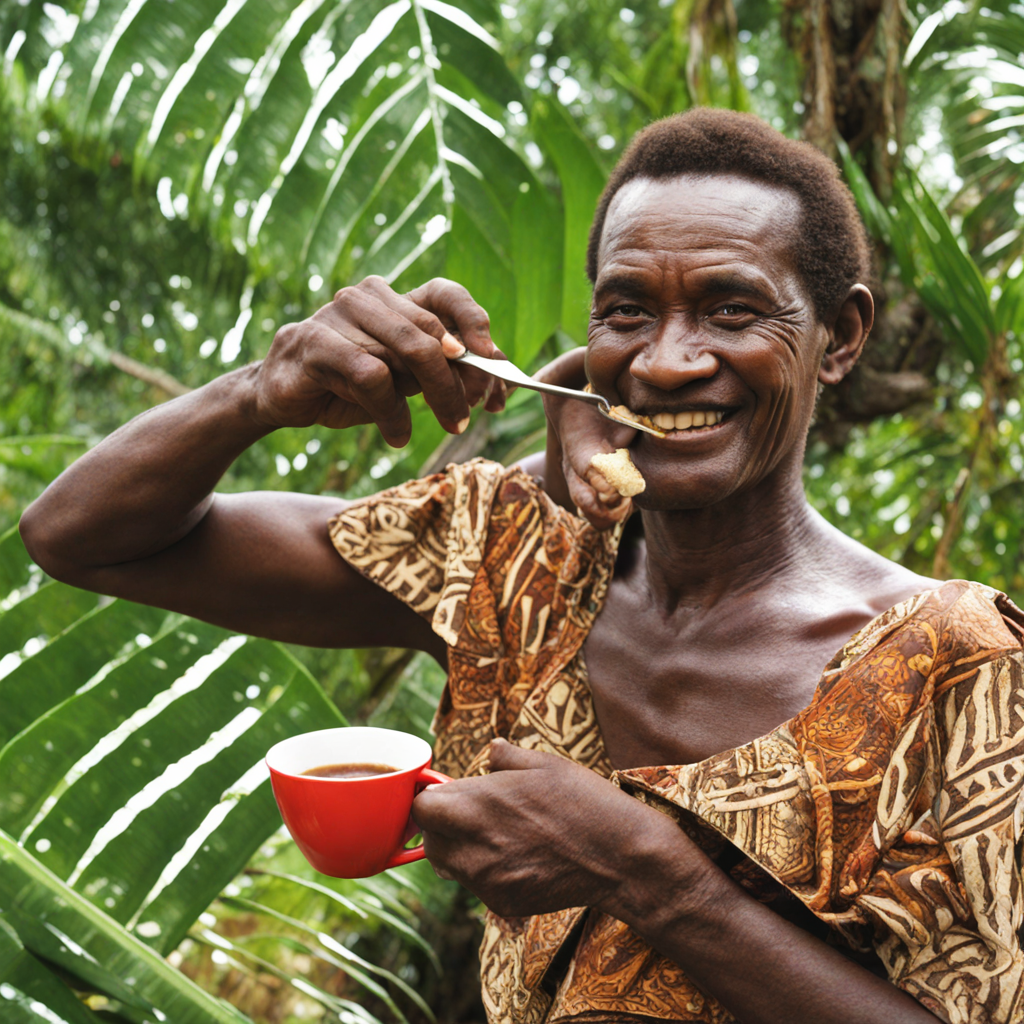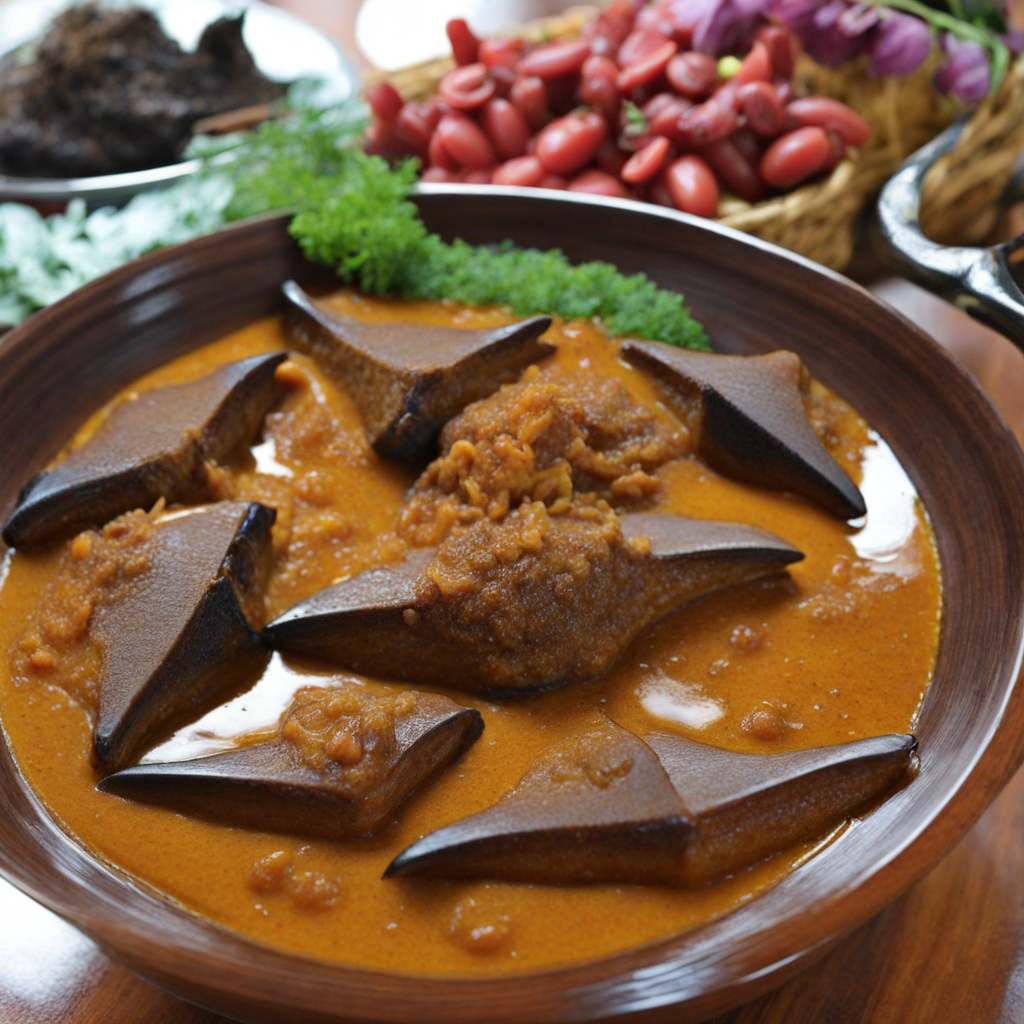Coconut Milk Fish
Coconut Milk Fish is a delightful culinary gem from Vanuatu that showcases the island's rich marine resources and tropical flavors. At its core, this dish features fresh, tender fish, often caught that very day, marinated in a vibrant blend of local spices and herbs. The fish is typically cooked in a luscious coconut milk sauce, which adds a creamy, slightly sweet element that beautifully complements the natural brininess of the seafood. This combination creates a harmonious balance of flavors that is both refreshing and satisfying, making it a must-try for any food lover seeking to explore the vibrant tastes of the Pacific Islands. What sets Coconut Milk Fish apart is not just the ingredients, but also the cooking method which often involves slow simmering. This technique allows the fish to absorb the rich flavors of the coconut milk while ensuring it remains moist and flaky. The addition of fresh vegetables, such as tomatoes and onions, not only enhances the dish's texture but also introduces a burst of color, making it visually appealing. Served with a side of steamed rice or root vegetables, Coconut Milk Fish becomes a complete meal that embodies the essence of Vanuatu's culinary heritage. The experience of enjoying Coconut Milk Fish is as much about the setting as it is about the taste. Often prepared for communal gatherings or family meals, this dish evokes a sense of togetherness and celebration. The tropical ambiance of Vanuatu, with its stunning landscapes and warm, inviting atmosphere, adds an extra layer of enjoyment to the meal. For those looking to discover new flavors, Coconut Milk Fish offers a unique glimpse into the simplicity and richness of island life, leaving a lasting impression on your palate and heart.
How It Became This Dish
The Delicate History of Fis Kokonat Milk in Vanuatu #### Origins: A Gift from the Tropics Fis Kokonat Milk, often simply referred to as coconut milk, holds a cherished place in the culinary landscape of Vanuatu, a stunning archipelago of 83 islands in the South Pacific. This creamy liquid, derived from the grated flesh of mature coconuts mixed with water, reflects the lush, tropical environment of Vanuatu, where coconut palms thrive abundantly. The origin of coconut cultivation in Vanuatu can be traced back thousands of years, with evidence suggesting that the coconut palm (Cocos nucifera) made its way to the Pacific Islands through ancient Polynesian navigators. These early voyagers brought with them the knowledge of how to cultivate and utilize coconuts, recognizing their immense versatility and nutritional value. Coconuts became not just a food source, but a cultural symbol, integrated into various aspects of daily life and spiritual practices. #### Cultural Significance: A Staple of Life In Vanuatu, fis kokonat milk is more than just an ingredient; it is a vital component of the local diet and culture. The coconut palm is often referred to as the "tree of life," with every part of the plant serving a purpose. The fruit itself is a rich source of hydration and sustenance, providing essential nutrients and fats. Fis kokonat milk is celebrated for its creamy texture and subtle sweetness, making it a key ingredient in numerous traditional dishes. Culinary traditions in Vanuatu often feature fis kokonat milk in local favorites such as "laplap," a dish made of grated root vegetables mixed with coconut milk and wrapped in banana leaves, then baked in an earth oven. This dish embodies the communal spirit of Vanuatu's culture, as families often gather to prepare and share meals together. The use of fis kokonat milk not only enhances the flavor but also connects the people to their land, highlighting the importance of locally sourced ingredients. Moreover, fis kokonat milk plays a significant role in ceremonial contexts. It is often used in traditional feasts and celebrations, symbolizing abundance and hospitality. The preparation of dishes with fis kokonat milk can involve elaborate rituals, showcasing the deep respect the Ni-Vanuatu people have for their food and the environment. #### Development Over Time: From Tradition to Modernity As Vanuatu has navigated the complexities of modernization and globalization, the role of fis kokonat milk has evolved, yet its essence remains deeply rooted in traditional practices. Historically, the preparation of fis kokonat milk was an artisanal process, involving the manual grating of coconut flesh and the careful extraction of milk. This labor-intensive method fostered a strong connection between the people and their food, as every step required skill and patience. In recent decades, however, the availability of pre-packaged coconut milk has changed the culinary landscape in Vanuatu. While convenience has its merits, it has also sparked a conversation about the preservation of traditional practices. Many Ni-Vanuatu people continue to value the authentic taste of freshly made fis kokonat milk, leading to a resurgence in artisanal methods among those wishing to maintain their culinary heritage. Local markets and festivals often feature stalls where artisans showcase their skills in producing fresh fis kokonat milk, allowing visitors to experience the richness of traditional flavors. Furthermore, the growing interest in health and wellness has brought fis kokonat milk into the global spotlight. As plant-based diets gain popularity, coconut milk is often praised for its nutritional properties, including healthy fats and lauric acid. This has led to an influx of tourists and expatriates seeking authentic culinary experiences in Vanuatu, eager to taste traditional dishes that highlight fis kokonat milk. #### Environmental Considerations: Sustainability and Future The cultivation of coconuts and the production of fis kokonat milk are not without challenges. Climate change poses a significant threat to the delicate ecosystems of Vanuatu, affecting coconut production and, by extension, the traditions surrounding fis kokonat milk. Rising sea levels and changing weather patterns endanger the livelihoods of many communities that rely on coconut palms as a primary source of food and income. In response to these challenges, there is a growing movement among local farmers and communities to adopt sustainable practices that protect their natural resources. Initiatives aimed at reforestation, organic farming, and community education are becoming more prevalent, ensuring that the cherished traditions surrounding fis kokonat milk can be preserved for future generations. #### Conclusion: A Taste of Heritage The history of fis kokonat milk in Vanuatu is a rich tapestry woven from the threads of culture, tradition, and resilience. From its origins as a staple food source brought by ancient navigators to its role in contemporary culinary practices, fis kokonat milk embodies the spirit of a people deeply connected to their land and heritage. As Vanuatu continues to embrace modernity while honoring its traditions, fis kokonat milk stands as a symbol of cultural identity and sustainability. Whether enjoyed in a traditional laplap or as a refreshing drink on a hot day, fis kokonat milk is a delicious reminder of the island's vibrant history and the enduring relationship between the Ni-Vanuatu people and their environment. In a world that increasingly values local and sustainable food practices, fis kokonat milk serves as a delicious ambassador of Vanuatu's culinary legacy, inviting all to partake in its rich history and taste the essence of the islands.
You may like
Discover local flavors from Vanuatu


